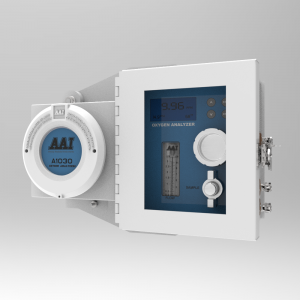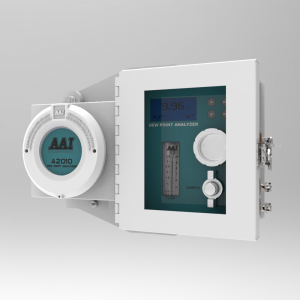Combustible gas alarms are composed of detectors and alarm control hosts. They are widely used in petrochemical industries with combustible gases such as petroleum, gas, chemical, and oil depots. They are used to detect leaks in indoor and outdoor dangerous places, which is to ensure production and personal safety. When there is flammable gas in the measured place, the detector converts the gas signal into a voltage signal or a current signal and transmits it to the alarm instrument, and the instrument displays the percentage concentration value of the lower limit of the flammable gas explosion. When the combustible gas concentration exceeds the alarm set value, an audible and visual alarm signal prompts, and the staff on duty take timely safety measures to avoid the occurrence of a fire and explosion accident.
- Cautions when applying
Once the fixed-point installation of the flammable gas alarm is in place, its position cannot be easily changed. According to the work experience accumulated over the years, the following points should be considered in specific applications.
(1) Find out which possible leak points of the device to be monitored, analyze their leakage pressure, direction and other factors, and draw a probe position distribution chart, which is divided into three levels of Ⅰ, Ⅱ, and Ⅲ according to the severity of the leak.
(2) Determine the leakage direction of the combustible gas when a large amount of leakage occurs according to the specific factors such as the airflow direction and wind direction of the location.
(3) According to the density of the leaked gas (greater than or less than air), combined with the air flow trend, a three-dimensional flow trend chart of the leak is synthesized, and an initial set point plan is made at the downstream position of the flow.
(4) Investigate whether the leak state at the leak point is slight leak or spray. If it is a slight leak, the set point should be closer to the leak point. If it is a spray leak, stay away from the leak. Synthesizing these conditions, the final set-up plan was drawn up. In this way, the quantity and variety to be purchased can be estimated.
(5) For places where there is a large amount of flammable gas leakage, a detection point shall be set every 10-20m apart according to relevant regulations. For small and discontinuously running pump rooms that are not on duty, you need to pay attention to the possibility of flammable gas leakage. Generally, a detector should be installed at the downwind.
(6) For places with hydrogen leakage, the detector should be installed on the plane above the leak point.
(7) For media with a gas density greater than air, the detector should be installed on a plane below the leak point, and pay attention to the characteristics of the surrounding environment. For places where flammable gas is likely to accumulate, special attention should be paid to the setting of safety monitoring points.
(8) For open flammable gas diffusion and escape environment, if there is no good ventilation condition, it is easy to make the flammable gas content in the air of a certain part approach or reach the lower explosive concentration. These are safety monitoring points that cannot be ignored.
According to the analysis results of on-site accidents, more than half of them were caused by incorrect installation and calibration. Therefore, it is necessary to introduce precautions for proper installation and calibration to reduce failures.
- Precautions for installation of flammable gas alarms
(1) There must be no strong electromagnetic fields (such as high-power motors and transformers) around the combustible gas alarm that affect the operation of the instrument.
(2) The alarm is a safety instrument with sound and light display functions. It should be installed in a place where staff can easily see and hear in order to eliminate hidden dangers in time.
(3) The installation height of the alarm should generally be 160-170cm, so that maintenance personnel can perform routine maintenance.
(4) The alarm probe is mainly a contact element of a combustion gas sensor. It consists of a platinum wire coil coated with alumina and an adhesive, and its outer surface is attached with rare metals such as platinum and palladium. Therefore, care must be taken during installation to avoid damaging the probe.
(5) The installation position of the indoor probe should be different depending on the density of the measured gas. When the density of the measured gas is less than the density of air, the probe should be installed 30cm away from the roof and facing downward; otherwise, the probe should be installed 30cm away from the ground and facing upward.
View more oxygen analyzer at www.avcray.com.




